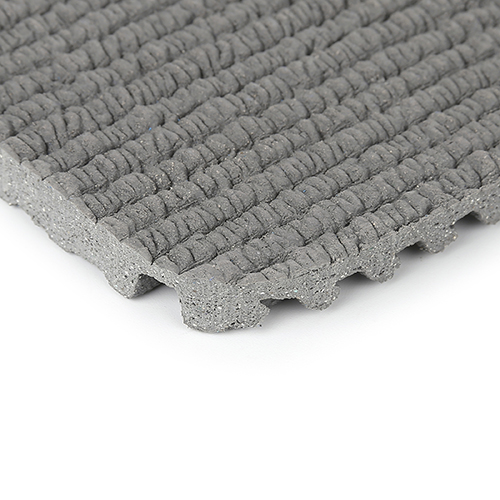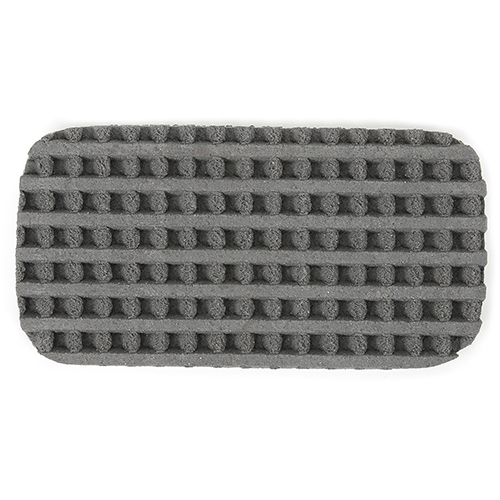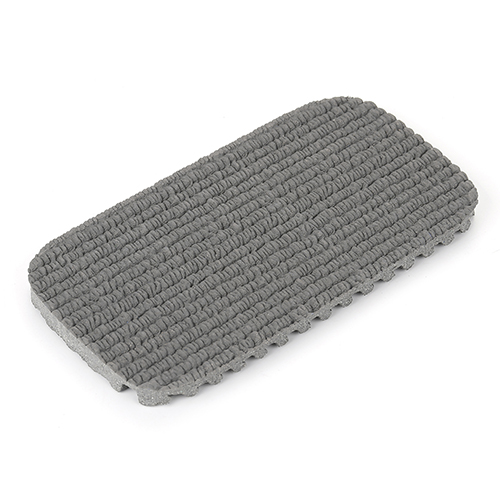jul . 22, 2025 01:01 Back to list
Premium Oval Running Track Solutions | Durable & Versatile
Hebei Enlio Sports Goods Co., Ltd
Website: https://www.enliosport.com
Email: info@enlio.com
Phone: 311-83771360
Address: 8th floor, Block B, ICC, No. 95, Cangyu Rd, Yuhua District, Shijiazhuang
Industry Evolution of Oval Running Tracks
The athletics surface industry has undergone revolutionary changes since the first oval running track was introduced in the 1960s. Modern running track carpet technology combines advanced polymer science with precision engineering to create surfaces that optimize athlete performance while minimizing injury risks. According to the International Association of Athletics Federations (IAAF), over 78% of professional athletic facilities now utilize prefabricated rubber tracks due to their superior durability and consistent performance metrics.
Technological Advancements
Today's rubber running track systems feature multi-layer construction: a resilient base layer for shock absorption, a reinforcement layer for dimensional stability, and a specialized topcoat layer with UV stabilizers and anti-slip texture. The prefabricated track mat approach pioneered by industry leaders like Hebei Enlio Sports Goods ensures consistent thickness (±0.5mm tolerance) and uniform elasticity across the entire running surface.
Grey Synthetic Surface-Rubber Prefabricated Track
Hebei Enlio's flagship oval running track solution combines competition-grade performance with exceptional durability. Engineered for professional athletics facilities, this system features:
- 13mm total thickness with dual-layer EPDM/SBR rubber composition
- Vertical deformation: 0.6-1.8mm (IAAF Class 1 Certified)
- Force reduction: 35-50% (optimal shock absorption)
- Slip resistance: ≥0.8 coefficient (dry/wet conditions)
- UV stabilization ensures color retention beyond 10 years
Recommended for both indoor running track installations and outdoor professional facilities where precise biomechanical response is critical.

Technical Specifications Comparison
| Parameter | Olympic Standard | College/University | Public Running Track | Enlio Premium |
|---|---|---|---|---|
| Thickness | 13-14mm | 10-13mm | 8-10mm | 13mm |
| Force Reduction | 35-50% | 35-45% | 30-40% | 42% |
| Vertical Deformation | 0.6-1.8mm | 0.7-2.5mm | 1.0-3.0mm | 0.8mm |
| Tensile Strength | ≥0.5MPa | ≥0.4MPa | ≥0.3MPa | 0.65MPa |
| Color Stability | Class 4 (ISO 105-B02) | Class 3 | Class 2 | Class 4 |
| Slip Resistance | ≥0.8 | ≥0.7 | ≥0.6 | 0.83 |
Installation Process for Prefabricated Running Tracks
The installation of a professional oval running track requires precise engineering:
- Subbase Preparation: Laser-leveled asphalt or concrete foundation with drainage gradient
- Primer Application: Specialty polyurethane bonding agent
- Mat Placement: Unrolling running track carpet sections with heat-welded seams
- Lane Marking: Thermoplastic application meeting IAAF width specifications
- Curing Period: Minimum 14-day chemical bonding period


Application Scenarios
Professional Athletic Facilities
IAAF-certified oval running track installations require precision manufacturing tolerances. Enlio's prefabricated system maintains consistent response characteristics across all weather conditions, meeting competition standards for force reduction (35-50%) and vertical deformation (0.6-1.8mm).
Educational Institutions
School and university tracks endure high-volume usage patterns. Our rubber running track formulation provides exceptional abrasion resistance while maintaining critical safety parameters for developing athletes.
Public Recreation Facilities
Public running track installations benefit from our UV-stabilized compounds that resist color fading and surface degradation. The non-porous surface inhibits microbial growth while providing year-round usability.
Indoor Training Facilities
For indoor running track applications, our low-VOC materials create healthier training environments. The specialized surface coating reduces dust accumulation and provides optimal traction without excessive shoe adhesion.
Professional FAQ: Oval Running Track Technology
What's the optimal rubber compound composition for all-weather performance?
Premium tracks blend EPDM (Ethylene Propylene Diene Monomer) for UV resistance and color stability with SBR (Styrene-Butadiene Rubber) for elasticity and impact absorption. The ideal ratio ranges between 60:40 to 70:30 EPDM/SBR depending on climate conditions.
How do installation techniques differ for prefabricated vs poured surfaces?
Prefabricated running track carpet utilizes factory-manufactured rolls (typically 1.22m width) heat-welded on-site over a prepared substrate. Poured systems require multiple application stages including base cushion, texture layer, and coating with curing periods between applications.
What critical standards govern running track construction?
Key certifications include IAAF Class 1/2 (competitive facilities), ASTM F2157 (impact attenuation), EN 14808 (vertical deformation), and DIN 18035 (sports surfaces). Meeting these requires comprehensive material testing and installation validation.
How often should professional tracks be resurfaced?
Industry research indicates optimal performance maintenance requires resurfacing every 8-10 years for high-use facilities. Annual inspections should evaluate surface integrity, bond strength, and shock absorption characteristics.
What design considerations affect track performance?
Critical factors include radius banking (typically 0.5-1.0° grade change), drainage gradient (minimum 0.8%), and straightaway transitions. Proper design minimizes lateral forces during cornering, reducing injury risks.
How does climate affect material selection?
Cold climates require modified rubber formulations with enhanced flexibility at low temperatures. High-heat environments need specialized UV stabilizers and thermal expansion joints. High humidity locations benefit from anti-microbial additives in the surface layer.
What's the environmental impact assessment for modern tracks?
Leading manufacturers utilize recycled rubber content (20-30%) while maintaining performance parameters. Lifecycle analyses indicate CO₂ reduction of 35% compared to traditional systems, with end-of-stage recyclability exceeding 90%.
Industry Research References
"Performance Analysis of Synthetic Track Surfaces Under Varying Environmental Conditions" - Journal of Sports Engineering & Technology (2023). https://journals.sagepub.com/doi/10.1177/17543371231153672
World Athletics Track Certification Program Technical Guidelines. https://worldathletics.org/about-iaaf/documents/technical-information
"Impact Attenuation Properties of Modern Athletic Surfaces" - ASTM International Symposium Proceedings (2022). https://www.astm.org/stp162020220025.html
International Association for Sports and Leisure Facilities (IAKS) Technical Standards. https://www.iaks.sport/en/standards
This is the last article
-
Premium Oval Running Track Solutions | Durable & Versatile
NewsJul.22,2025
-
Durable Sport Court Tiles for Pickleball & Multi-Use | Buy Now
NewsJul.21,2025
-
SES Battle II: Durable All-Weather Outdoor Basketball Court for Pros
NewsJul.21,2025
-
SmartAgri Solutions-Smart Technology|Precision Irrigation&AI-Driven Crop Monitoring
NewsJul.12,2025
-
Outdoor Pickleball Tape for Durable & Weatherproof Court Marking Easy Apply Outdoor Court Tape Solutions
NewsJul.08,2025
-
Best Outdoor Court Shoes for Pickleball – Durable, Comfortable & Non-Slip Performance
NewsJul.08,2025

